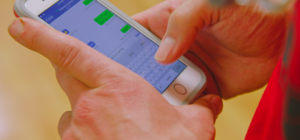It seems like every day we hear about some new disaster on the news. From the devastation of natural events like tornados and hurricanes to the chaos of man-made mass casualties, emergency preparedness should always be a forefront consideration for hospital administration. Even something as seemingly mundane as flu season can cause a patient surge that threatens supply pars and wears out both clinical and operational staff, jeopardizing the hospital.
Expecting the Unexpected
It’s a difficult topic to consider—no one wants to think about what might happen in the event of a disaster. For this reason, many hospitals stick to the bare minimum requirements outlined by The Joint Commission and call it a day. But the bare minimum is likely not enough.
A breakdown in communication can be damaging in a healthcare setting even when there’s no emergency. In an actual emergency situation, equipping your staff with quick, clear and accurate information—beyond the standard Hospital Incident Command System—can mean the difference between life and death for patients.

In our latest white paper, we explore some of the gaps that occur when hospitals rely too heavily on the minimum requirements outlined by The Joint Commission, including outdated information, not following proper protocol, supply shortage and even public relations mishaps
A Proactive Approach
We also explore the ways in which you can reinforce the communication leg of your emergency preparedness plan while maintaining its ability to accommodate to many varied situations. This includes leveraging innovative broadcasting tools, digital staffing and unit assignment, providing staff with easy access to triage protocol and other hospital policies and more. By equipping your clinical and operational staff with a flexible and comprehensive mobile platform, they can send and receive critically important information in seconds.
In 2017, the Federal Emergency Management Association estimated that more than 25 million Americans were affected by a major disaster or emergency. The best way to keep those people safe and healthy is to have robust plans in place for care in any situation. Download our white paper to determine where your strategy may be lacking so that your health system can better serve staff and patients.





